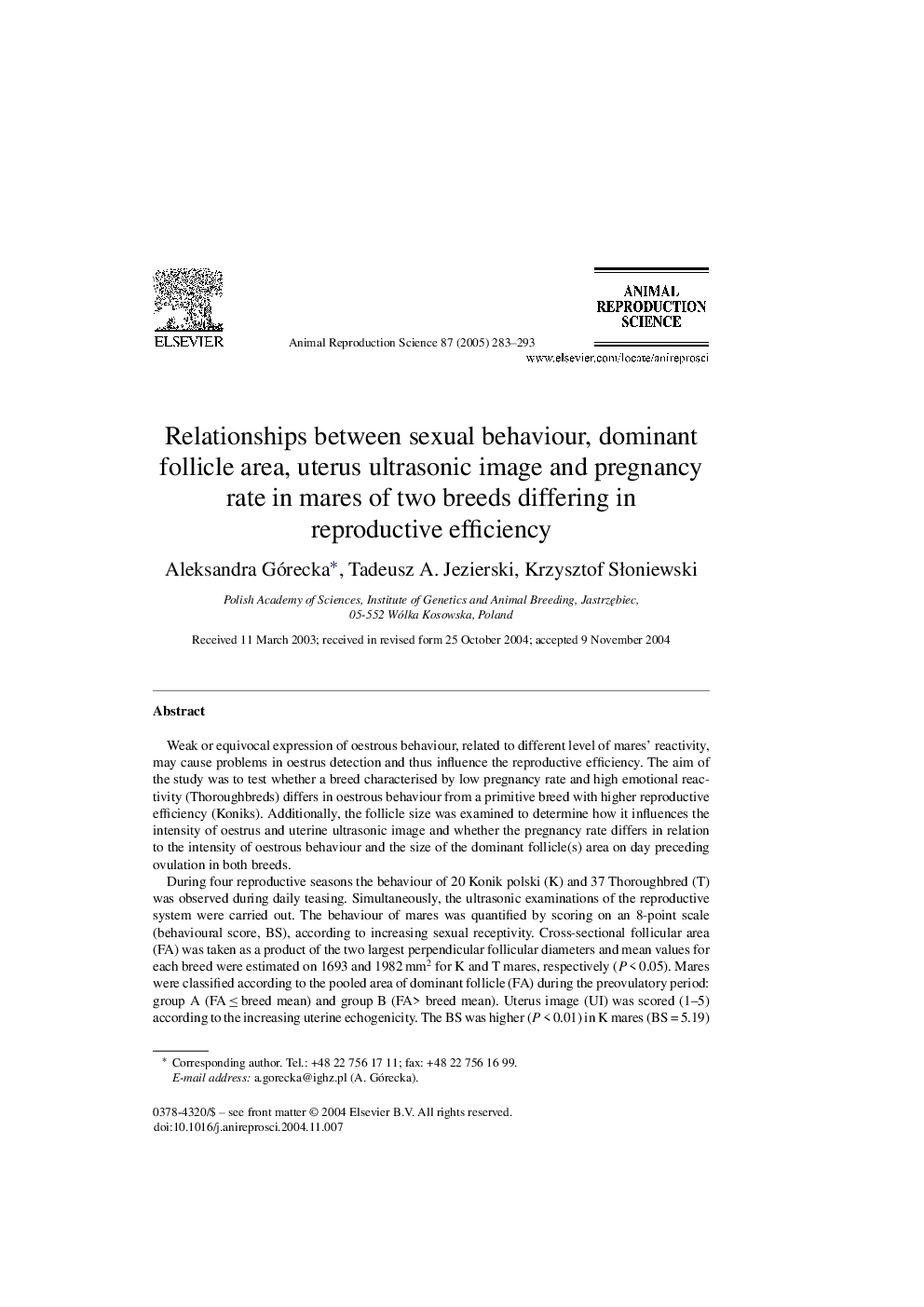| کد مقاله | کد نشریه | سال انتشار | مقاله انگلیسی | نسخه تمام متن |
|---|---|---|---|---|
| 9900301 | 1544839 | 2005 | 11 صفحه PDF | دانلود رایگان |
عنوان انگلیسی مقاله ISI
Relationships between sexual behaviour, dominant follicle area, uterus ultrasonic image and pregnancy rate in mares of two breeds differing in reproductive efficiency
دانلود مقاله + سفارش ترجمه
دانلود مقاله ISI انگلیسی
رایگان برای ایرانیان
کلمات کلیدی
موضوعات مرتبط
علوم زیستی و بیوفناوری
علوم کشاورزی و بیولوژیک
علوم دامی و جانورشناسی
پیش نمایش صفحه اول مقاله

چکیده انگلیسی
During four reproductive seasons the behaviour of 20 Konik polski (K) and 37 Thoroughbred (T) was observed during daily teasing. Simultaneously, the ultrasonic examinations of the reproductive system were carried out. The behaviour of mares was quantified by scoring on an 8-point scale (behavioural score, BS), according to increasing sexual receptivity. Cross-sectional follicular area (FA) was taken as a product of the two largest perpendicular follicular diameters and mean values for each breed were estimated on 1693 and 1982 mm2 for K and T mares, respectively (P < 0.05). Mares were classified according to the pooled area of dominant follicle (FA) during the preovulatory period: group A (FA â¤Â breed mean) and group B (FA> breed mean). Uterus image (UI) was scored (1-5) according to the increasing uterine echogenicity. The BS was higher (P < 0.01) in K mares (BS = 5.19) than in T mares (BS = 4.04). The BS was significantly related to increasing follicular area (FA). There was no breed difference in uterus image (UI) score. However, significant regression of UI on FA was found in K mares. The intensity of oestrus was positively related with UI (r = 0.29; P < 0.01) only in K mares, no such relationship was found in T mares. The pregnancy rate was significantly higher for K mares (88.5%) than for T mares (46.0%) and lower for T mares with less intense oestrous behaviour (29.4%) as compared to T mares with more intense oestrus (60.0%). No differences in pregnancy rate was found in mares belonging to A or B group of follicular area. The ascertained weaker oestrous behaviour in Thoroughbred was related to lower pregnancy rate. It is hypothesised that oestrus intensity may be the result of breed differences in the response of the neural system to follicular secretions, or may be an effect of higher incidence of multiple non-synchronic ovulation and/or higher sensitivity to stress in Thoroughbred mares.
ناشر
Database: Elsevier - ScienceDirect (ساینس دایرکت)
Journal: Animal Reproduction Science - Volume 87, Issues 3â4, July 2005, Pages 283-293
Journal: Animal Reproduction Science - Volume 87, Issues 3â4, July 2005, Pages 283-293
نویسندگان
Aleksandra Górecka, Tadeusz A. Jezierski, Krzysztof SÅoniewski,